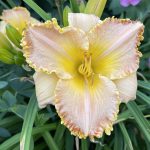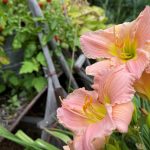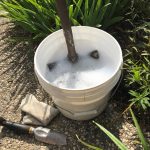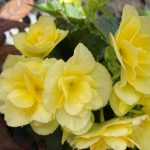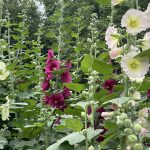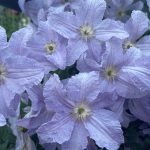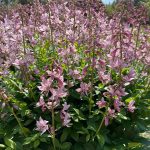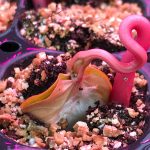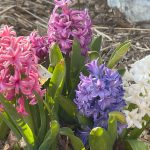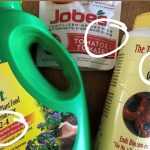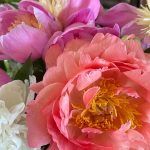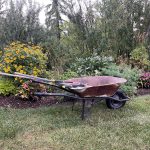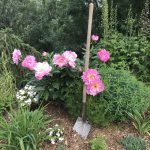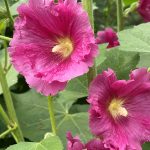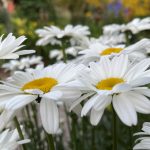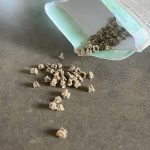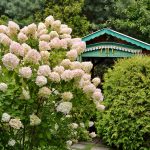As August winds down and autumn shows its colours, know that some of the best of perennials gardening has arrived!
Fall blooming perennials extend the joy of gardening deeply into the season as leaves crunch under our feet.
Fall blooming perennials play an essential role in the ecosystem for bees and other pollinators. Autumn is a critical time of year for bees as they engage in their last push to forage and build up their supplies for winter.
Fortunately, many fall flowering plants are literal bee magnets. It’s not unusual to see bees covering many of these varieties of fall bloomers.
Many flowers of these later bloomers are unaffected by frost and, because of this, the flowers stay beautiful and healthy until they die or until an early winter settles in.
Let’s look at four of my favourite fall bloomers because of their consistent performance year after year, their zone hardiness, and their beauty.
Tall Fall Blooming Sedums (Stonecrop)
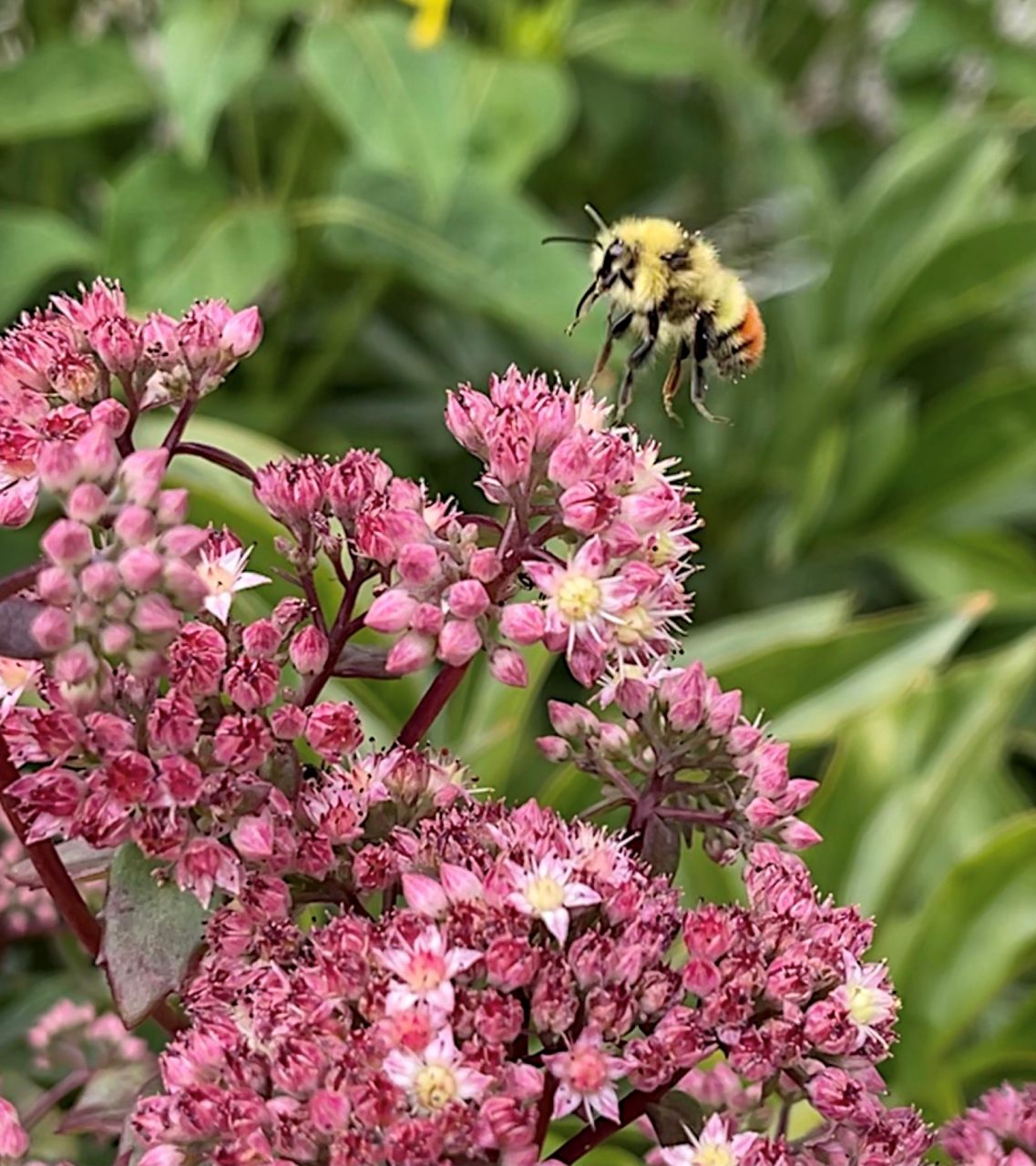
Tall Fall Blooming Sedums are a great perennial for zone 3 & 4 gardens. They originate from areas of China and Korea.
The Latin name for Fall Blooming Sedums is Sedum spectabile and their common names are Stonecrop, Butterfly Stonecrop, and Ice Plant.
Fall Sedums are typically 18-24″ (45-60 cm) tall, they love a full sun exposure, and they bloom during the late summer and early fall.
Fall Sedums have large clusters of tiny five-petaled star-shaped flowers. Their blossom colours range from yellow to shades of pink and red. However, the most common colours are pink and red hues.
Tall fall blooming Sedums come in an assortment of foliage colours, too. Their leaves may be pale green, dark green, variegated white & green, bronzy, pink, purple, and purple so dark that it looks black. The leaf colours get darker with more sun exposure.
Sedums are quite drought tolerant once they are well established — meaning that they have been growing in their spot for three years or more. The first two years of a perennial’s life are spent getting their roots and growth patterns established in their new location.
Fall blooming sedums are bee attractors. Bees, wasps, and butterflies love sedums, and sedums play a vital role in the pollinator world as summer flowering perennials die back.
There are many great varieties of fall blooming Sedums; some easily available and reliable favorites are ‘Autumn Joy’, ‘Autumn Delight’, ‘Neon’, and ‘Matrona’.
Solidago (Golden Rod)
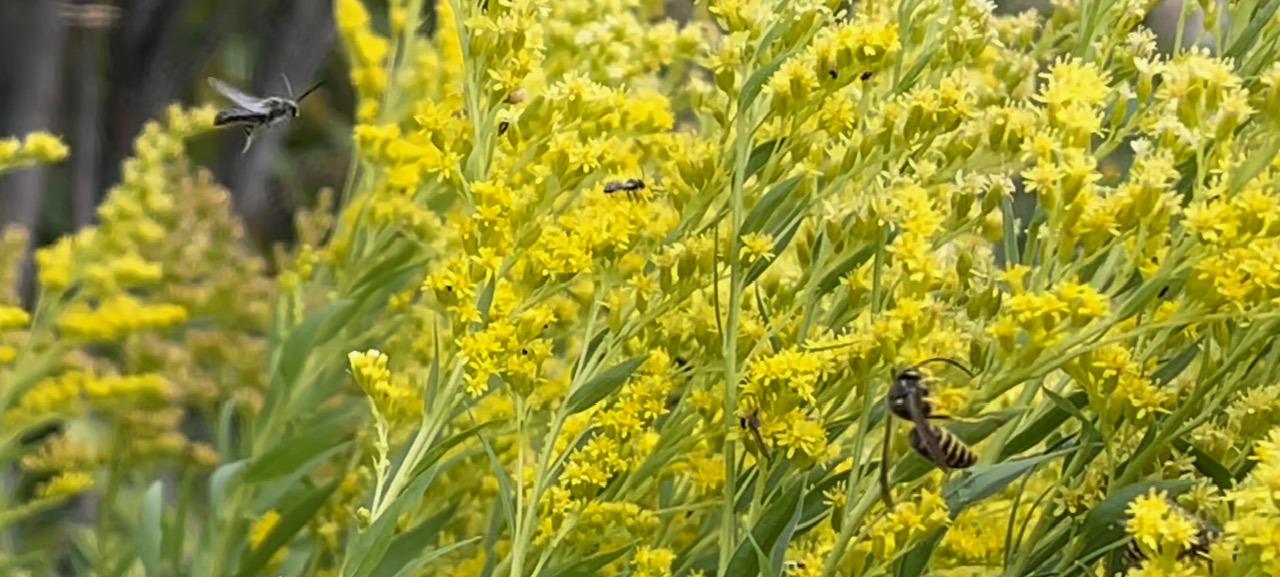
Solidago is a native North American prairie perennial that sports feathery golden-yellow plumes that light up autumn landscapes. There are beautiful varieties that grow well in zones 3 & 4.
Solidago prefers full sun and part sun locations, and they tolerate dry conditions once they are well established. Varieties range in height from 12-24″ (30-60 cm).
Bees and wasps also love Solidago flowers, and as they bloom, the flowers will fill up with pollinator activity.
Good performing Solidago varieties for our plant growing zones 3 & 4 include ‘Super’ and ‘Goldrush’.
Fall Blooming Asters (Michaelmas Daisy)
Fall blooming Asters are another wonderful prairie flower; they are native to central and eastern North America.
Asters have recently experienced a name change to Symphyotrichum. Therefore, Aster is now considered their common name.
Fall flowering Asters have a daisy-like shape with a bright yellow center.
This group grows well in a full sun and part-sun location and contributes colours of pinks, reds, purples, and whites to a fall garden landscape.
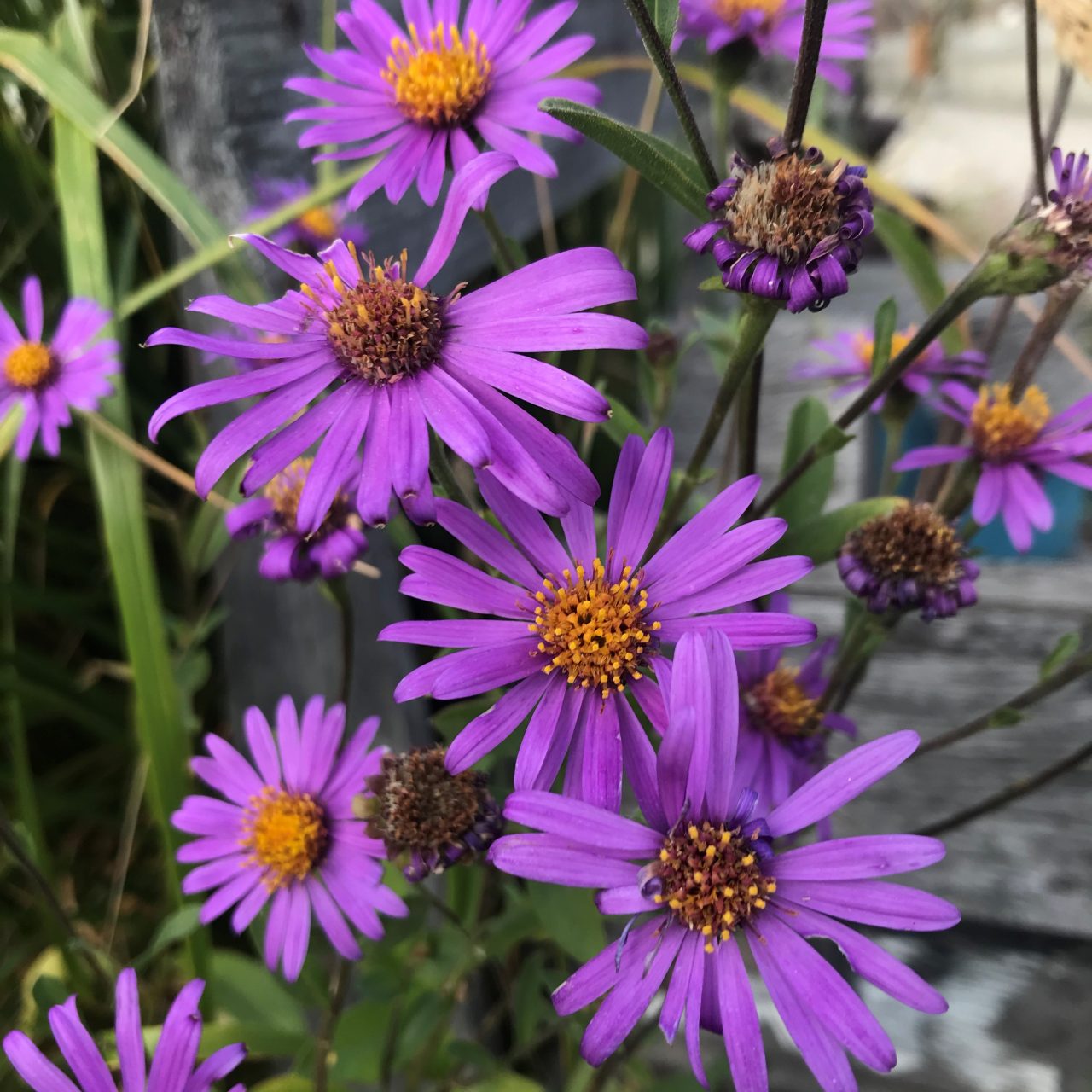
Grow Asters in soil that drains well as Asters do not appreciate having wet feet. They will eventually rot and die if their roots remain wet for too long. Their tolerance of cold winters is variety dependent, so always be sure to check labels for their zone rating to be appropriate for your growing area.
Common variety heights for garden landscapes range from 18-30″ (45-60 cm).
Varieties that perform well in plant growing zones 3 & 4 include ‘Purple Dome’, ‘Pink Dome’, and ‘Monch’.
Actea or Cimicifuga (Bugbane or Black Cohosh)

Actea is native to the eastern side of North America and has several common names like Black Snakeroot, Common Black Cohosh, and Fairy Candles.
Actea is a shade lover but ideally prefers 1-2 hours of early morning sunlight. If it doesn’t receive it, it can slow the blooming or not bloom at all.
Cimicifuga blooms in mid-September with spires of tiny four-petaled, highly fragrant flowers in either white or light pink.
Actea develops deep roots and spreads by rhizome growth. Rhizomes are roots that tunnel horizontally below the ground. They grow a taproot as they mature, enabling them to withstand dry conditions once established after three years of growth.
Leaf colour, mature height, and flower colour are the determining factors of the different varieties.
Foliage colours can be either green, bronze, or black. Heights range from 4-5’ (125-150 cm).
Great performers for our zone 3 & 4 area include: ‘Autropurpurea’, ‘Brunette’, and ‘Black Negligee’.
Looking for even more options Fall Flowering Perennials?
Try some of these:
- Chrysanthemum (Fall Mums)
- Hemerocallis (Daylilies)
- Nepeta (Catmint)
- Pervoskia (Russian Sage)
- Rudbeckia (Black-Eyed Susan)
- Heliopsis (False Sunflower)
©Sharon Wallish Murphy ©Gardening With Sharon



